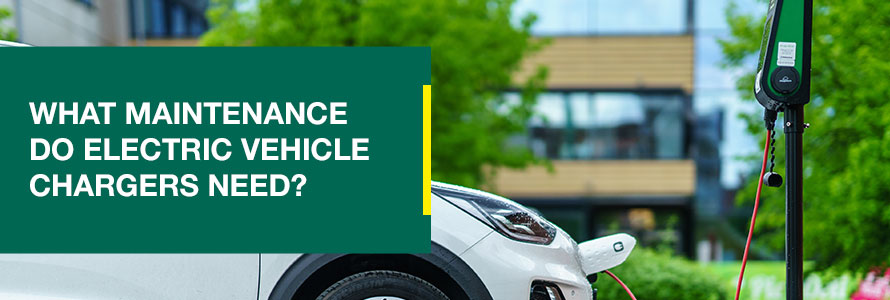
Maybe you’re considering installing a Level 3 electric vehicle (EV) charger in your garage for personal use, adding multiple chargers to your company’s employee parking lot or investing in commercial charging stations to take advantage of the growing demand for electric vehicles. No matter your purposes, there other consdierations for you beyond the intial cost, such as the cost of ev charger maintenance, component wear and tear, and preventing charger damage.
Beyond the initial purchase, installation and ongoing energy costs, you should think about the money and time spent maintaining your charging station. It is also essential to consider the expected lifespan of your charging station and how much the cost of replacement will be when the time comes.
The costs of acquiring and maintaining an electric vehicle charging station will vary based on multiple factors, including the charger’s location, the frequency of use and the type of charging station. The expected costs and maintenance required will depend mainly on the charging level and whether or not the station is networked or non-networked.
Learn more about the different types of electric chargers and the basic ev charger maintenance involved in owning each with the guide below.
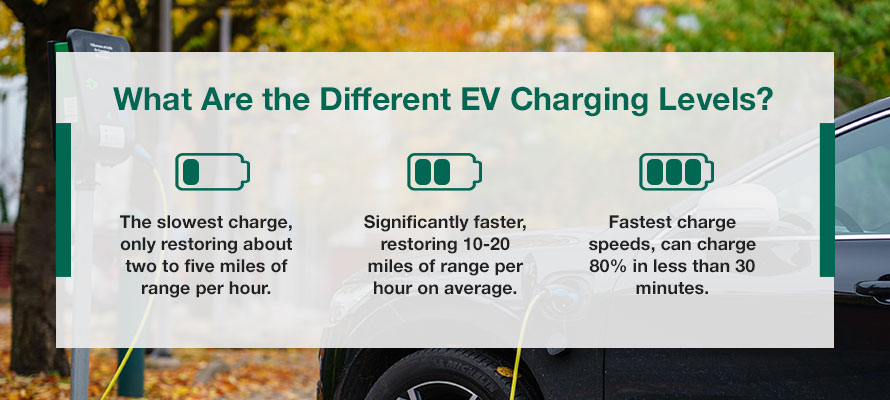
What Are the Different EV Charging Levels?
There are three different levels of charging electric vehicles. Each EV charge level has different requirements for installation, charging rates and use cases. Level one and level two charging are best suited for individuals or businesses that provide on-site charging stations for their employees. Some companies operate both level one and level two chargers for different purposes. Level three is the fastest charging level, but the price makes it impractical for most home-use cases.
Level One EV Chargers
Level one chargers offer the slowest charge, only restoring about two to five miles of range per hour. This charge level may be sufficient for users who only drive short distances and aren’t as concerned about their level of battery depletion. Level one options are also suitable for drivers who allow their electric vehicles to charge for long periods, such as overnight at home or during the workday at the office’s charging station.
The primary benefits of level one charging are cost and flexibility. A level one charger can plug into a standard 120 V outlet, the same as most home appliances in the U.S. Most plug-in electric vehicles come with a level one charger included, meaning providing level one charging can be as cheap and simple as providing a power supply.
Alternatively, installing wall or pedestal-mounted electric vehicle supply equipment (EVSE) allows drivers to charge their vehicle without needing to provide their own cord. This functionality provides an added level of convenience and removes the risk of theft of the cordset while still being cheaper to install and maintain than a level two charger.
Level Two EV Chargers
Level two charging is significantly faster than level one, restoring 10-20 miles of range per hour on average. This option is great for drivers who drive long distances or cannot charge their car for extended periods. If you have a busy schedule that has you drive across town multiple times per day or have a long commute to work, a level two charger is probably the better choice for you.
This charger level is the most commonly used method for electric vehicle charging in the workplace. Businesses prefer to use level two chargers in their parking lots to restore power to more than one vehicle throughout a workday. Level two also provides an adequate driving range in less time for employees who do not spend the entire workday at the office.
Level two chargers, including the wall connector charging station by Tesla, require 240 volts to charge. You will want to contact a professional electrician to perform the installation properly. A level two EVSE generally has a higher cost than a level one ESVE, but the faster charger time makes it worth the investment.
Level Three EV Chargers
Level three charging offers the fastest charge speeds and can charge an electric car to 80% in less than 30 minutes. There are some considerations to make regarding this charger choice, however.
This level of charging uses direct current (DC) instead of the alternating current (AC) that nearly all homes and businesses use. For individual homes, level three charging options may have a higher price tag that does not make them worthwhile for residential use. A level three ESVE can cost anywhere in the tens of thousands of dollars range to install, limiting it primarily to commercial vehicle charging stations. Still, offering these chargers as a business can be an appealing draw for clients and employees alike.
What Are Networked vs. Non-Networked Chargers?
It is essential to understand the difference between networked and non-networked chargers as they have different capabilities, maintenance requirements and associated costs.
Non-networked charges are the most appropriate for residential use. Businesses may choose networked or non-networked depending on how they intend to use the charging stations. If you need detailed usage reports or plan to charge for usage, you will need networked chargers.
Networked EV Chargers
Networked chargers typically cost more but provide many key benefits. As the name suggests, networked chargers connect to an internet network with a digital infrastructure in place. This network allows you to manage the charger remotely, which provides a high degree of control over how others use the charger.
A networked ESVE provides access to usage data, including how often, how long and when the charger is being used. Network chargers allow you to control who has access, how long they use and when they use it. Networked chargers make it possible to charge a fee for usage. Even if they do not plan to charge for access to their chargers, businesses may wish to opt for a networked charger to limit when and how people use their chargers to control energy usage costs.
Networked chargers are beneficial if you plan on operating multiple chargers. These internet-connected chargers allow for the possibility of load sharing. Load sharing allows up to four level two chargers to run on a single circuit by fluctuating energy consumption based on the needs of the vehicles that are charging.
It is also important to know that most networked chargers are on a closed network, meaning they only work with a specific electric vehicle charging hardware manufacturer. So if you are considering purchasing a networked EVSE, take the time to research the different providers available to you and consider what provider best fits your needs. Alternatively, you can buy a charger with an open network that allows you to use different brands and models of chargers.
Non-Networked EV Chargers
Non-networked charging stations are not connected to a network or accessed remotely. For homeowners, this limitation is not an issue. While non-networked chargers do not provide detailed usage information, it is still possible to see the total electricity used over a specified time. If you have an outdoor charging station and are worried about restricting access to it, you can use an outlet cover and padlock to prevent unauthorized use.
Though the wiring installation is the same for both networked and non-networked chargers, networked charging stations cost more to purchase. The communication technology built into networked chargers can cost up to a few thousand dollars more than their non-networked counterparts. There is also an annual charge to use the EVSE network. This charge adds a few hundred dollars per year to the cost of owning an electric vehicle charger.
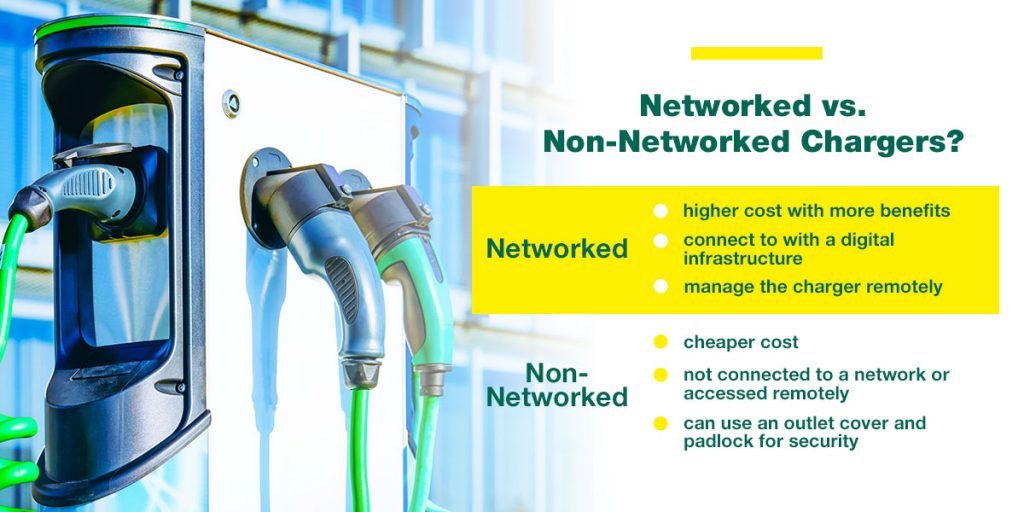
Level One and Level Two EV Charger Maintenance
The maintenance and upkeep requirements for level one and level two charging stations are minimal and affordable. That convenience makes these charging stations suitable for homeowners and business owners alike. Maintenance is primarily a matter of storing the cables securely, keeping the equipment clean and occasionally checking the equipment for damage or wear.
How the station is cared for and used plays a role in how long a unit will last and how much it will cost to maintain. The industry estimate for the usable life of an electric vehicle charging system is 10 years on average. Keep in mind that modern electric vehicles are a relatively new convenience. As the technology improves and changes, the maintenance needs and lifespans of charging stations could change, too.
Currently, a charging station that is only used occasionally for a single vehicle will generally last longer than a similar charger that charges multiple cars per day. Exposure to the elements can also cause parts to fail prematurely. An indoor or covered unit will have a longer life expectancy than an outdoor charging station, especially in harsher climates.
Level One Charging Station Maintenance
For a level one charging station, you will want to take these EV charging station maintenance steps:
- Have the outlet changed: Change the electrical outlet periodically. According to the U.S. Department of Energy, an outlet will last several years, with the outlet itself costing between $1-$40. You’ll then need to factor in the electrician’s fee to install the new outlet.
- Replace the cordset: Another typical expense is having to replace the cordset due to vandalism or misuse. Securely storing the charging cord can prevent accidental damage and extend the life of the equipment. Avoid allowing the cord to hang in the air as it can put a strain on the cordset and the outlet.
- Check for adequate tension: Another critical aspect of preventative maintenance for electric vehicle charges is ensuring sufficient tension to keep the plug securely inserted into the receptacle. The U.S. Department of Energy recommends testing the tension of the receptacle at least annually to identify safety hazards and avoid potential downtime.
Level Two Charging Station Maintenance
Level two charging stations are more complex with more components and may require slightly more maintenance. Because they have more parts than a level one charger, level two chargers are more likely to malfunction. Thankfully, these stations are modular in design, so individual components can be replaced without replacing the entire unit. The U.S. Department of Energy recommends budgeting up to $400 a year per charger to account for the possibility of parts breaking after their warranty expires.
Level Three Charging Station Maintenance
Level three charging stations require significantly more maintenance than lower-level charging stations. These chargers require regularly scheduled preventive and corrective maintenance for the upkeep of the cooling system, filters and other advanced components that level one and level two chargers lack.
If you are operating a level three charging station, you should arrange an ongoing service plan with the manufacturer. Location and usage factors will impact the frequency and extent of the maintenance required for the electric vehicle charging station. Make sure to include the costs of such care when planning the cost structure of your charging stations.
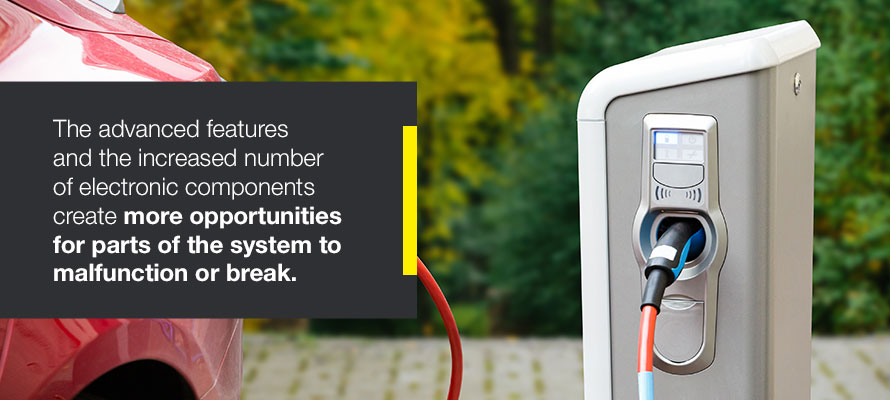
Networked EVSE Station Maintenance
Networked EVSE stations often require more frequent maintenance than non-networked stations. The advanced features and the increased number of electronic components create more opportunities for parts of the system to malfunction or break. Specifically, the extra features of networked charging stations will need to be periodically checked and occasionally replaced or repaired, including:
- Communication systems
- Data collection
- Touch screens
- Card readers
These more sophisticated machines are also likely to require periodic technical troubleshooting, such as manual resets.
Some network problems can be solved remotely without requiring a technician to travel to the physical location. Other common issues will require an electrician to address. Some EVSE manufacturers and network providers offer warranties and service plans to reduce the ongoing costs of troubleshooting and hardware replacement. Some warranties cover the cost of parts and labor. If you are currently operating or planning to purchase networked charging station equipment, be sure to discuss the service plans and warranties available to you.
Contact Wiretech Company for Electric Vehicle Charging Station Installation
Electric vehicle charging equipment is specialized and needs to be installed by professional electricians. Wiretech Company is a top Tesla-referred contractor with expertise installing 240-volt circuits. We’d be happy to help you implement or upgrade an EV charging station for your home, completing the entire process. From installing a new high amp breaker to running a dedicated electrical line and installing the proper plug, we’ll get the job done right.
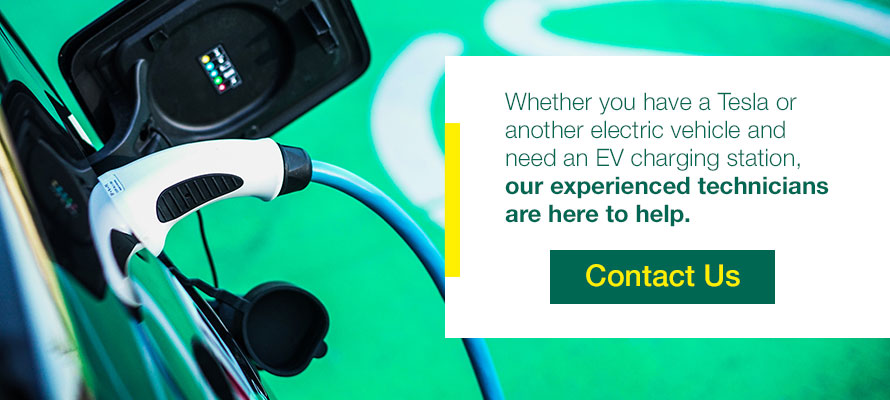
We have been serving the Raleigh, North Carolina, area for over 30 years. Whether you have a Tesla or another electric vehicle and need an EV charging station, our experienced technicians are here to help. Contact us to install your charging station or for any other residential electrical service or repairs.
